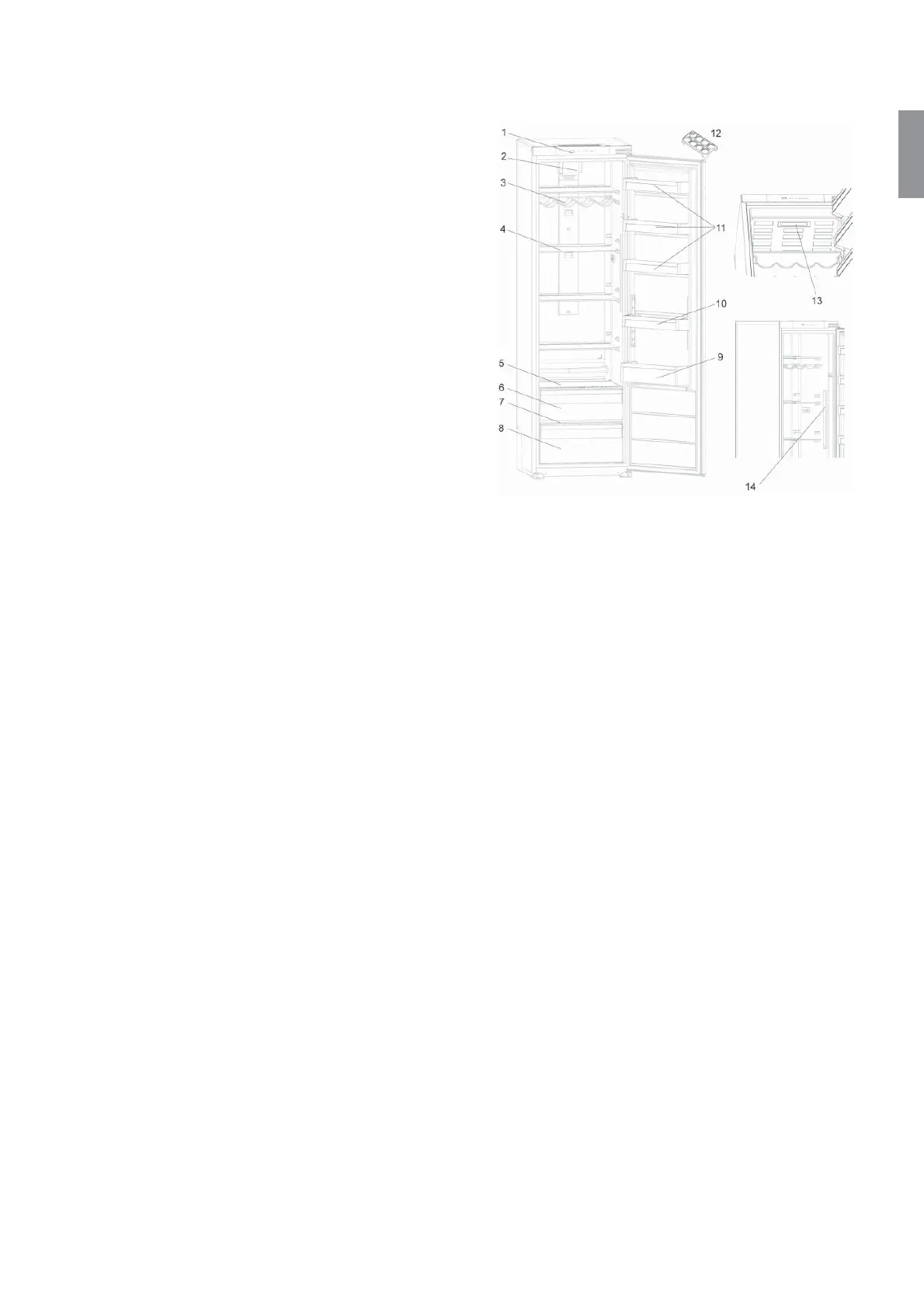Handleiding
Je bekijkt pagina 7 van 28

GB
7
BEFORE CALLING YOUR AFTER SALES SERVICE
What to do if your appliance performs poorly;
Check that;
• You have not overloaded the appliance ,
• The fridge temperature set to 2.
• The door is closed perfectly ,
• There is no dust on the condenser ,
• There is enough place at the rear and side walls.
If your fridge is operating too loudly;
Normal Noises
Cracking (Ice cracking) Noise:
• During automatic defrosting.
• When the appliance is cooled or warmed (due to expansion of appliance
material).
Short cracking: Heard when the thermostat switches the compressor on/o .
Compressor noise: Normal motor noise. This noise means that the compressor
operates normally Compressor may cause more noise for a short time when it
is activated.
Bubbling noise and splash: This noise is caused by the ow of the refrigerant
in the tubes of the system.
Water ow noise: Normal ow noise of water owing to the evaporation
container during defrosting. This noise can be heard during defrosting.
Air Blow Noise: Normal fan noise. This noise can be heard in fridges during
normal operation of the system due to the circulation of air.
If the edges of fridge cabinet that the door joint contact are warm;
Especially in summer (hot weather), the surfaces that the joint contact may get
warmer during the operation of the compressor, this is normal.
If humidity builds up inside the fridge;
• Are all food packed properly? Are the containers dried before placing them
in the fridge?
• Is the fridge’s door opened frequently? Humidity of the room gets in the
fridge when the door is opened. Humidity build up will be faster when you
open the door more frequently, especially if the humidity of the room is
high.
If the door is not opened and closed properly;
• Do the food packages prevent closing of the door?
• Are the door compartments, shelves and drawers placed properly?
• Are door joints broken or torn?
• Is your fridge on a level surface?
Recommendations
• To stop the appliance completely, unplug from main socket (for cleaning
and when the door is left open)
TIPS FOR SAVING ENERGY
1. Install the appliance in a coll, well vantilated room , but not in direct
sunlight and not near heat source (radiator, cooker.. etc). Otherwise use
an insulating plate.
2. Allow ward food and drinks to cool down outside the appliance.
3. When thawing frozen food, place it in the refrigerator compartment.
The low temperature of the frozen food will help to cool the refrigerator
compartment when it is thawing. So it causes energy saving. If the
frozen food is put out, it causes wastage of energy.
4. When placing, drinks and slops they must be covered. Otherwise
humidity increases at the appliance. Therefore the working time gets
longer. Also covering drinks and slops helps to save smell and taste.
5. When placing food and drinks, open the appliance door as brie y as
possible.
6. Keep close the covers of any di erent temrepature compartment in the
appliance (crisper, chiller ...etc ).
7. Door gasket must be clean and pliable. Replace gaskets if worn.
BEFORE CALLING YOUR AFTER SALES SERVICE PARTS OF THE APPLIANCE AND THE
COMPARTMENTS
This presentation is only for information about the parts of the appliance.
Parts may vary according to the appliance model.
1. Control panel
2. Turbo fan
3. Wine rack
4. Fridge shelves
5. Upper crisper cover
6. Upper crisper
7. Bottom crisper cover
8. Bottom crisper
9. Bottle shelf
10. Door shelf (Adjustable door shelf *)
11. Door shelf
12. Egg holder
13. Upper side LED strip *
14. Left / Right side LED strip *
* In some models
Bekijk gratis de handleiding van Freggia LSB3000, stel vragen en lees de antwoorden op veelvoorkomende problemen, of gebruik onze assistent om sneller informatie in de handleiding te vinden of uitleg te krijgen over specifieke functies.
Productinformatie
| Merk | Freggia |
| Model | LSB3000 |
| Categorie | Koelkast |
| Taal | Nederlands |
| Grootte | 5416 MB |







